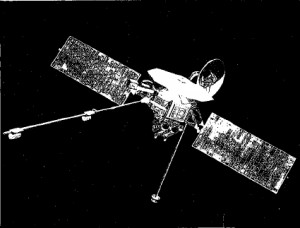Polonium
 Polonium (Po) is a rare and highly radioactive element. Po has 22 different isotopes, all of them unstable and radioactive. A radioactive element is one that does not have a stable nucleus. Recall that an element is defined by the number of protons it has. The number of neutrons and electrons can change, however the number of protons defines the element. So while all Po isotopes have 84 protons, the number of neutrons varies. Radioactivity means that the Po atom is not happy with the number of neutrons that it has and is working towards either gaining or losing neutrons in order to become stable. Among the different polonium isotopes, Po-210 is the most common naturally occurring isotope. However, Po-210 is highly radioactive; 1 gram of Po-210 can produce about 140 watts of power. That is why it is often used in artificial satellites and moon rovers as a source of energy.
Polonium (Po) is a rare and highly radioactive element. Po has 22 different isotopes, all of them unstable and radioactive. A radioactive element is one that does not have a stable nucleus. Recall that an element is defined by the number of protons it has. The number of neutrons and electrons can change, however the number of protons defines the element. So while all Po isotopes have 84 protons, the number of neutrons varies. Radioactivity means that the Po atom is not happy with the number of neutrons that it has and is working towards either gaining or losing neutrons in order to become stable. Among the different polonium isotopes, Po-210 is the most common naturally occurring isotope. However, Po-210 is highly radioactive; 1 gram of Po-210 can produce about 140 watts of power. That is why it is often used in artificial satellites and moon rovers as a source of energy.
The other potentially toxic property of polonium is that there tends to be a lot of it in the protein of marine organisms. Humans receive their largest dose of radiation from consumption of seafood (about 70%) from Po-210. This is due to Po-210 bioaccumulation in the food web. In fact, estimates suggest that consumption of just 4 kg of scallops would be enough to reach the maximum annual allowance of radioactivity for humans (Bustamante et al., 2002). Thus it is important to understand how polonium ends up in our waters.
A number of studies suggest that Po-210 can be removed from bottom sediments (where they would be trapped) and put into the water under low oxygen conditions. The Gulf of Mexico’s hypoxic zone creates the perfect location from Polonium to be removed from the sediment and put back into the water where it will be available for organisms to take up into their bodies. My research on this cruise is under the hypothesis that- low oxygen levels cause Polonium-210 to leave the sediment and be available in increased numbers for bioassimilation.


Recent Comments